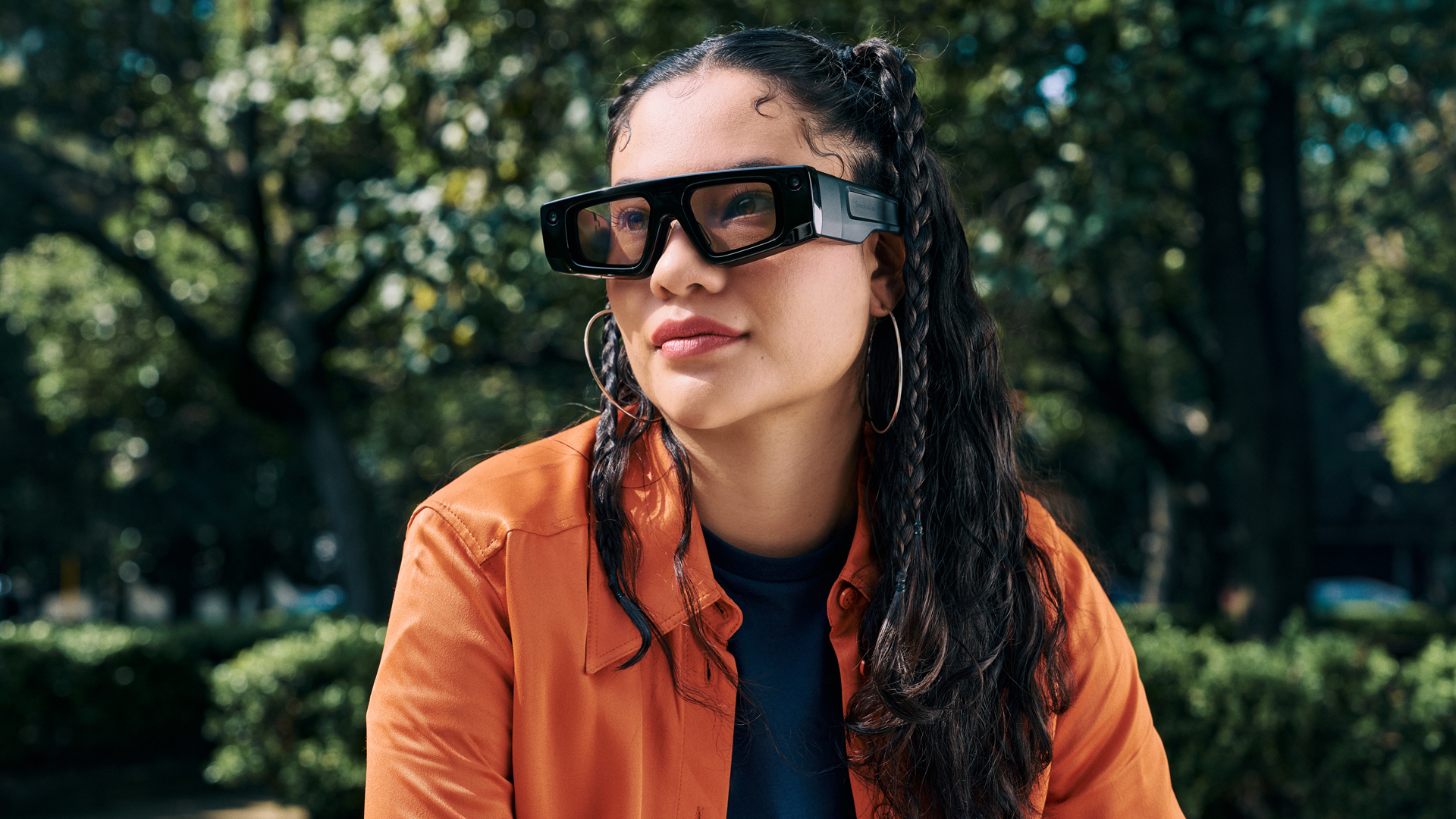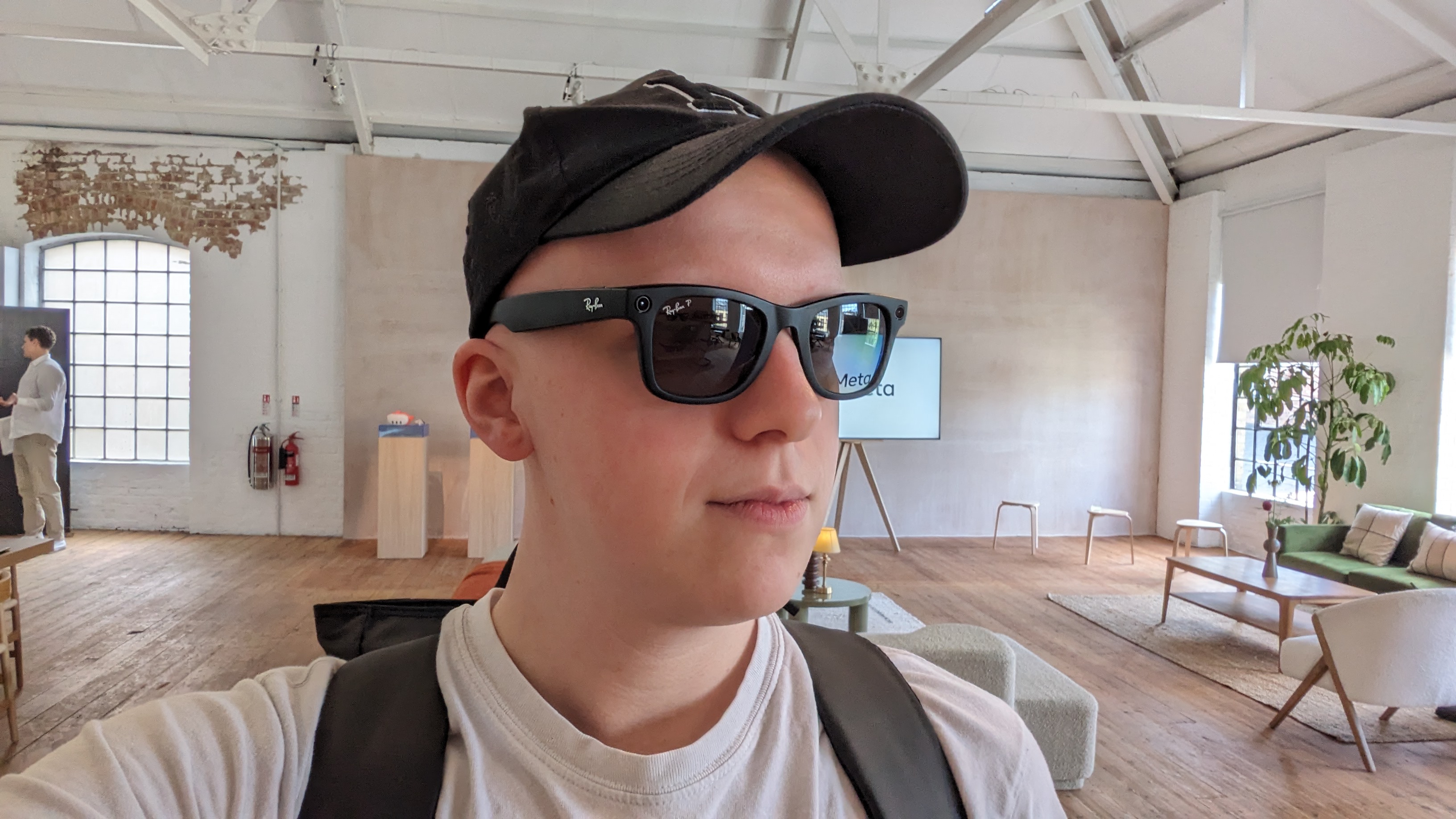This week we saw the arrival of new Snap Spectacles, and based on what’s been announced they sound like beefy AR glasses that inch closer than ever to our expectations based on sci-fi depictions of the tech. But while they might be in the running for the best smart glasses, man, do they look goofy.
They look like those massive 3D glasses you wear at the cinema, and definitely not something I’d like to be seen wearing in public. That’s a sharp contrast to the Ray-Ban and Meta collaboration smart glasses, which have utterly triumphed in the fashion department. Those ooze cool – right down to their slick charging case – and all summer they were my shades of choice even when powered off, largely because of their aesthetics.
Based on design alone, I know which glasses I’d rather wear day-to-day, and even though the Snap Spectacles are clearly more feature-packed, a large part of me would still rather slip on the Meta Ray-Bans smart glasses.
Because in our wearable tech era, fashion is at least as important as function.

Fashion is more than design
I want to make a quick distinction between a design feature and tech being fashionable.
In the smart glasses world, a design feature is something like electro-chromic dimming lenses – lenses that you can make clearer or more shaded at the push of a button via electrical stimulation. This is a design feature I’ve tested in specs like the Chamelo glasses, which helps make the smart glasses wearable in a variety of weather conditions – a feature lacking in the Meta Ray-Ban smart glasses which are permanently shaded, meaning I can only use them about a quarter of the year here in the UK.
Fashion, on the other hand, doesn’t need to offer a benefit that’s anything more substantial than looking good, a factor such as the frame shape or color. Smart glasses brands like Lucyd and Ray-Ban have shown a clear understanding of this aspect of design, boasting a selection of frame shapes that are otherwise functionally identical to each other. Letting you customize your experience with no sacrifices to the tech capabilities.
Sometimes fashion and design features are intertwined. Look at smart rings. Their biggest design feature – reducing clutter by removing the smartwatch or fitness tracker’s usual screen – offers functional differences between it and other health wearables. At the same time, it enables a different design profile that supports people who prefer a more minimalist aesthetic or want to wear a classic dumb watch without losing out on wellness tracking – or needing to wear two watches (something that looks super weird, and you know it).
Even without being linked to function, however, fashion cannot and should not be dismissed.

Work good, look better
In other areas of tech, it’s understandable why fashionable perks could be dismissed as unnecessary. My PC’s RAM sticks won’t run faster because they glow with RGB lighting, a gold-plated iPhone is still just an iPhone. But wearables – smart accessories that replace our classic choice of jewelry – are more than just how useful they are.
Our fashion is an extension of who we are, it’s a way for us to outwardly express ourselves, putting a stamp on our visual identity. So even if the smart accessory offers a useful benefit to our health, fitness, or safety, why should that gadget expect us to compromise our identity for it?
Part of this is being in the early stages of smart glasses and wearables in general. There’s only so much style variation you can account for if the gadget has to cram in a lot of tech, or you’re not expecting to sell many (every variant adds complexity and cost).
That said, I think it’s equally important for wearables makers to devote effort to ensuring something is fashionable as well as functional and useful. This means introducing variants so we can find a design that matches our vibe or making a singular product's design look fantastic rather than chunky and dopey.
Because just like it doesn’t matter if a clothing item is from a designer brand if you don't like the style, it doesn’t matter how great a wearable is if you think it looks ugly. If we don’t like how it looks, we’re not going to wear it often – and how useful is a smart wearable really if it sits in your drawer all day?
You might also like
from TechRadar - All the latest technology news https://ift.tt/XjdRU0e
No comments:
Post a Comment